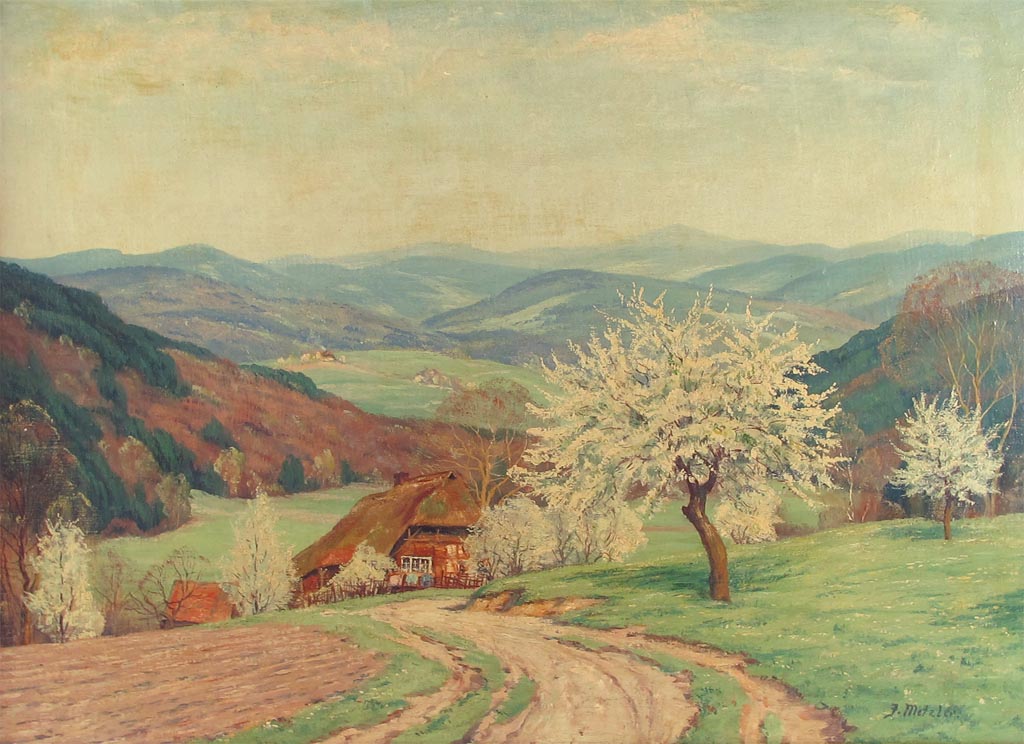|
J. Metzler
J. Metzler was a German artist of the Düsseldorf school. His works were made between the last decades of the 19th century and the first decades of the 20th century and were very popular at that time. He was specialised in Landscape art and painted mostly the Rhine valleys (especially the Lower Rhine The Lower Rhine (german: Niederrhein; kilometres 660 to 1,033 of the river Rhine) flows from Bonn, Germany, to the North Sea at Hook of Holland, Netherlands (including the Nederrijn or "Nether Rhine" within the Rhine–Meuse–Scheldt delta); al ... near Düsseldorf) but also landscapes everywhere in Germany. Until today the identity of this famous painter of the past remains unknown. 19th-century German painters German male painters {{Germany-painter-stub ... [...More Info...] [...Related Items...] OR: [Wikipedia] [Google] [Baidu] |
Düsseldorf School Of Painting
The Düsseldorf school of painting is a term referring to a group of painters who taught or studied at the Düsseldorf Academy (now the Staatliche Kunstakademie Düsseldorf or Düsseldorf State Art Academy) during the 1830s and 1840s, when the Academy was directed by the painter Wilhelm von Schadow. About The work of the Düsseldorf School is characterized by finely detailed yet fanciful landscapes, often with religious or allegorical stories set in the landscapes. Major members of the Düsseldorf School advocated "plein air painting", and tended to use a palette with relatively subdued and even colors. The Düsseldorf School derived from and was a part of the German Romantic movement. Prominent members of the Düsselorf School included von Schadow, Karl Friedrich Lessing, Johann Wilhelm Schirmer, Andreas Achenbach, Hans Fredrik Gude, Adolph Tidemand, Oswald Achenbach, and Adolf Schrödter. The Düsseldorf School had a significant influence on the Hudson River School in t ... [...More Info...] [...Related Items...] OR: [Wikipedia] [Google] [Baidu] |
Landscape Art
Landscape painting, also known as landscape art, is the depiction of natural scenery such as mountains, valleys, trees, rivers, and forests, especially where the main subject is a wide view—with its elements arranged into a coherent composition. In other works, landscape backgrounds for figures can still form an important part of the work. Sky is almost always included in the view, and weather is often an element of the composition. Detailed landscapes as a distinct subject are not found in all artistic traditions, and develop when there is already a sophisticated tradition of representing other subjects. Two main traditions spring from Western painting and Chinese art, going back well over a thousand years in both cases. The recognition of a spiritual element in landscape art is present from its beginnings in East Asian art, drawing on Daoism and other philosophical traditions, but in the West only becomes explicit with Romanticism. Landscape views in art may be entirely ... [...More Info...] [...Related Items...] OR: [Wikipedia] [Google] [Baidu] |
Lower Rhine
The Lower Rhine (german: Niederrhein; kilometres 660 to 1,033 of the river Rhine) flows from Bonn, Germany, to the North Sea at Hook of Holland, Netherlands (including the Nederrijn or "Nether Rhine" within the Rhine–Meuse–Scheldt delta); alternatively, ''Lower Rhine'' may refer to the part upstream of Pannerdens Kop, excluding the Nederrijn. Almost immediately after entering the Netherlands, the Rhine splits into numerous branches. The main branch is called the Waal which flows from Nijmegen to meet the Meuse; after which it is called Merwede. Near Rotterdam the river is known as Nieuwe Maas, and becomes the Nieuwe Waterweg flowing into the North Sea at Hook of Holland. The downstream Lower Rhine is a low lying land. Up to the beginning of industrialization roughly one fifth of the land area could only be used as pasture: an endless meadow, which could not be farmed because of flooding and a high ground-water level. However, the remaining soils of the Lower Rhine were alwa ... [...More Info...] [...Related Items...] OR: [Wikipedia] [Google] [Baidu] |
19th-century German Painters
The 19th (nineteenth) century began on 1 January 1801 ( MDCCCI), and ended on 31 December 1900 ( MCM). The 19th century was the ninth century of the 2nd millennium. The 19th century was characterized by vast social upheaval. Slavery was abolished in much of Europe and the Americas. The First Industrial Revolution, though it began in the late 18th century, expanding beyond its British homeland for the first time during this century, particularly remaking the economies and societies of the Low Countries, the Rhineland, Northern Italy, and the Northeastern United States. A few decades later, the Second Industrial Revolution led to ever more massive urbanization and much higher levels of productivity, profit, and prosperity, a pattern that continued into the 20th century. The Islamic gunpowder empires fell into decline and European imperialism brought much of South Asia, Southeast Asia, and almost all of Africa under colonial rule. It was also marked by the collapse of the large S ... [...More Info...] [...Related Items...] OR: [Wikipedia] [Google] [Baidu] |




